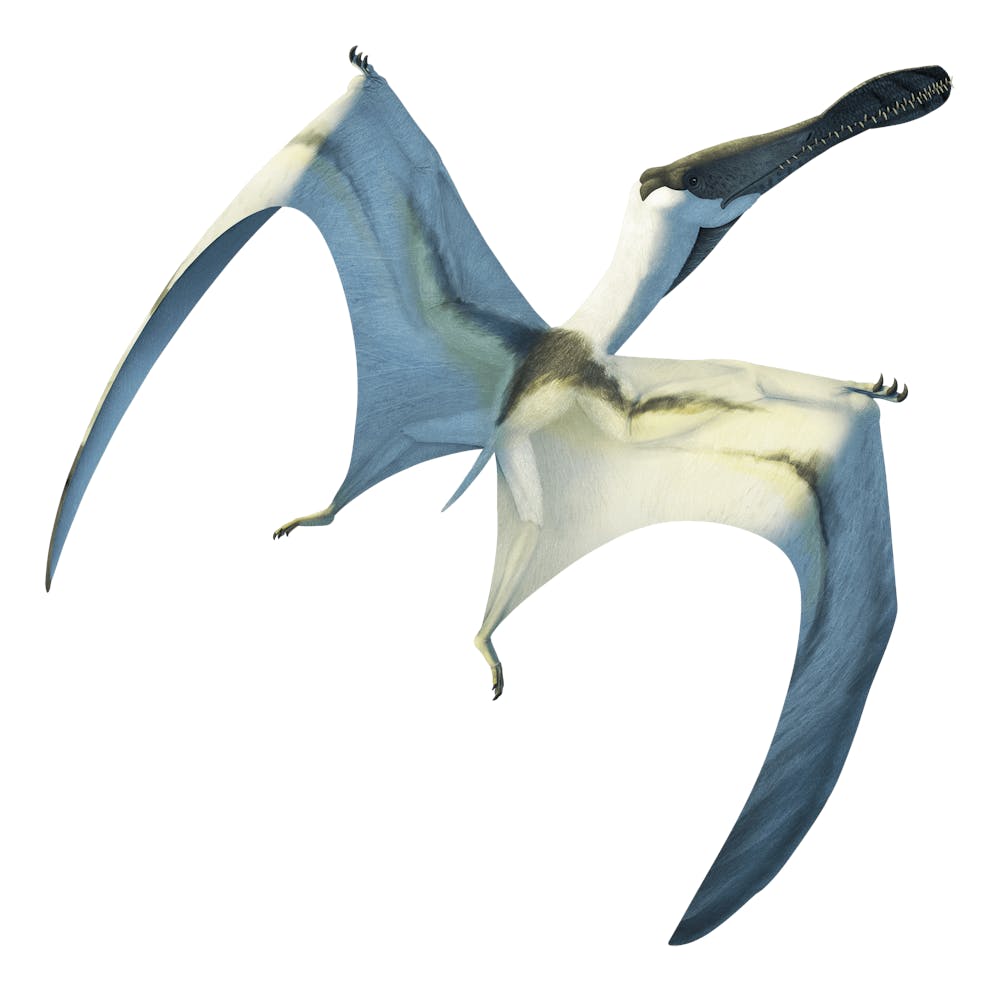


In 1999 Bryn Mader and Alexander Kellner named a new genus and species of ornithocheirid, Siroccopteryx moroccensis, the first pterosaur named from Morocco. It’s based on a fragment of the upper jaw from a single individual and was discovered in the Upper Cretaceous Kem Kem Beds near the Algerian border. The genus is named for the Sirocco or Scirocco, a hot, dry, and dusty wind that travels from the Sahara north across the Mediterranean and into Europe. The species name honors the country of Morocco.
The specimen is a fragment from the end of the upper jaw, and is about 12 cm (5 inches) long, 7 cm (3 inches) tall, and 3 cm (1 inch) wide. Instead of tapering to a point, the tip of the jaw has a flattened and nearly vertical surface, similar to Coloborhynchus and Uktenadactylus. There are 8 pairs of teeth or empty sockets present in the specimen, although there were likely many more farther back in the jaws. The first pair of teeth emerges from the flat, front edge and points forward, while the others point down. The second through fourth pairs of teeth are larger than the others, and all are gently curved cones.
There is a narrow sagittal crest on the upper surface of the snout fragment that, when complete, probably made a sine-wave-like contour. When seen from above, the jaw tips are very slightly laterally expanded compared to the rear part of the fragment, with the widest point near the second and third tooth positions. Unlike many other ornithocheirids with laterally expanded jaw tips, the end of the rostrum in Siroccopteryx has a rectangular rather than oval contour. Most ornithocheirids that have crests on the tips of their jaws have mirrored crests on their chins, and it’s likely Siroccopteryx did too.
The only known specimen of Siroccopteryx has a very unusual bone texture on almost all of its external surface as well as portions of its palate. It also had two pits on the left side above the fourth and fifth teeth. Mader and Kellner considered the texture to be the result of serious injury to the snout, and the pits to be possible abscess drainage pits.
By comparison to other ornithocheirids, Siroccopteryx probably had a skull about 65-70 cm (25-28 inches) long, and a wingspan of about 3 to 3.5 meters (10-11.5 feet).
Mader and Kellner initially assigned Siroccopteryx to the Anhangueridae, a family of narrow-winged aerial fishers. The lineage that Kellner and his coauthors call Anhangueridae is called Ornithocheiridae by most other authors, as well as here at Pteros. In 2001, David Unwin sunk Siroccopteryx into the similar genus Coloborhynchus, as Coloborhynchus moroccensis. This was rejected by Taissa Rodrigues and Alexander Kellner in 2009, noting several differences between the two species as well as the 25-30 million year time difference. Most recently, a large phylogenetic analysis performed by Nick Longrich and colleagues found that Siroccopteryx, Uktenadactylus, and Coloborhynchus to be most closely related to each other, falling within the ornithocheirine subfamily of the ornithocheirids.
When Siroccopteryx was alive, roughly 98 million years ago, this part of Morocco was farther south than it is today with a tropical to subtropical climate. The rocks of the Kem Kem Beds were formed by rivers and estuary waters, and supported a large community of crocodilians, dinosaurs, and pterosaurs, as well as several enormous fishes.